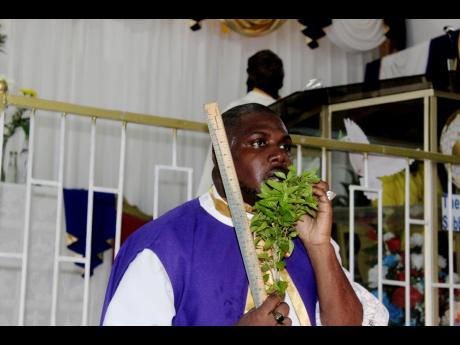Revivalism not for arbitrary entertainment – Part II
Some people find Revival rituals entertaining and dramatic even though this is not their purpose. The caution is that they must not be imitated and staged for entertainment purposes as importantly, these rituals are purposeful and spiritual, and, therefore, are not to be mocked.
Also, while performance is embedded in these rituals, it is not performance to entertain. It has no commercial value and should not be staged to make money. It is performance to carry out a certain purpose, to achieve a particular spiritual aim. The argument is that the moment it becomes commercial is the moment, it ceases to be Revivalism. It is something else.
“ Victor Turner describes the performance as the ‘eye of the ritual’. The ritual leader performs the roles of master of ceremonies, priest, producer, and director. The first phase is called a stable or structured ritual, during which the leader uses the ritual mix embedded in a ritual setting with candles, flags, flowers, and other icons. All these icons add mystique to the proceedings,” Maria A. Robinson-Smith writes in her 2018 book, Revivalism – Representing An Afro-Jamaican Identity.
“ In this phase the leader is in full control … The clients are led by him and he goes through the process of anointing with the ritual mix as he is inspired to do … Most of all, he is the masterdancer. He calls the bands the ‘chorus’, which respond as he pulls on their strength and energy. He gives advice and instructions to his clients, loosens them up and relaxes them through the dance.”
TANGIBLE HERITAGE
Choreography is involved because of the purposefulness, but the second part is more unstructured because the leader is now communicating with the spirit world. It is no longer a performance with human and human, but with human and spirit, Robinson-Smith says.
“ It is his performance with the spirits, the fact that he can wrestle and communicate with them, dismiss them or use them at will that defines his status as a master leader or a failed leader … These performances are informed by ancestral wisdom and bring to the fore ancestral experiences. The language, the rhythms and the dance, which at times are discernibly African-derived, confirm the sharing of ancestral knowledge … After this performance, the high point of the ritual has passed and the client is on the path back to the real world.”
In the real world, non-Revivalist onlookers may have been entertained by what they saw and could be inspired to imitate it and stage it. But they may have totally missed the point, not having a clue about what happened and why it happened.
“It is through rituals that most aspects of people’s intangible heritage are transmitted from one generation to the next. Rituals are body-based practices, hence the physical aspects of the performances, how they are performed, when they are performed, who is involved, and the relationship between the participants are important to the success of the ritual. Music and dance, two expressions often regarded as tangible heritage, are not only enjoyed and practised by Revivalists, but play a critical role in the effectiveness of their rituals and ceremonies,” Robinson-Smith explains.
IDENTITY OF DIFFERENCE
Even outside of the rituals, the singing, drumming, dancing, trumping, humming, note-blowing, etc, may seem like entertainment without a specific purpose. But it is not. Something is always going on. It is performance with a purpose.
“Every good Revival leader is an excellent performer. This applies to Kapo, Reid, Graham, Walley, Rudd, Hill, and numerous others known and not so well known. They are able to use singing, dancing, chanting, and other rhythmic devices to bring the best out of their bands and to hold the bands together,” Robinson-Smith says.
“Revivalists have always used spirit possession as a vehicle for expressing their cultural identity and their concept of history. Through these cultural performances, revivalists have recalled their history, recorded special events and emphasise community values, and through the contestant repetition of preferred aesthetic qualities; they have performed an identity of difference.”
It is indeed an “identity of difference”, and it is the misunderstanding of this difference that is the issue. Non-Revivalists do not know and understand what Revivalists do, but they find it entertaining to the point where they take the liberty of staging it for cultural shows and celebratory occasions like funerals and wakes. It is not even so much about the staging of it on these occasions, but it is very much about the why of it. Revivalism is worship; it is spiritual and purposeful. It is not something to toy with.



